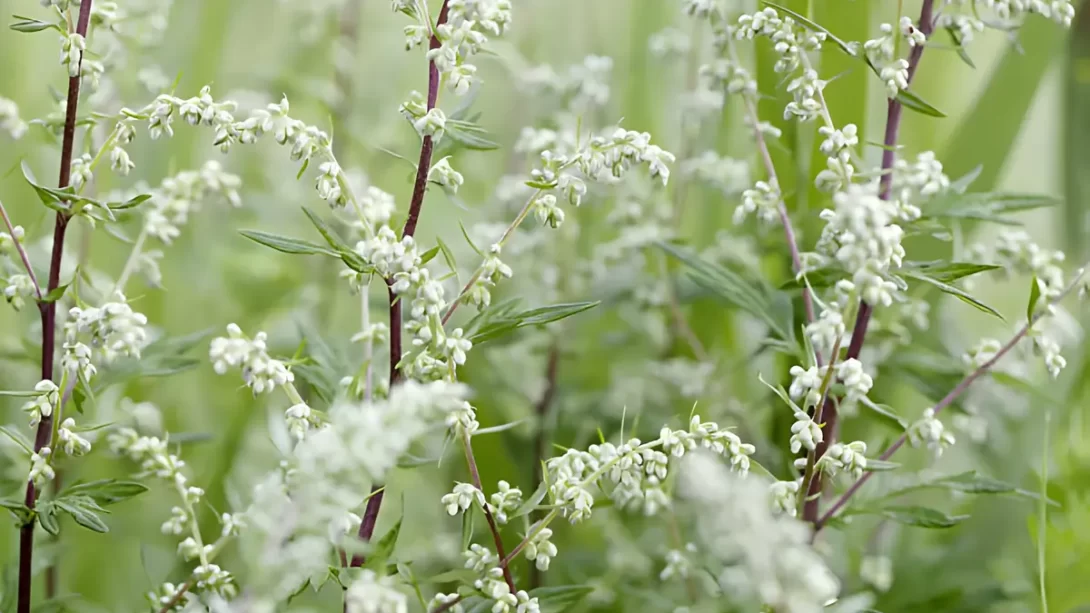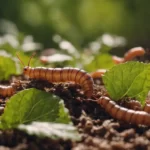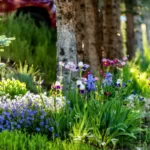Mugwort (Artemisia vulgaris) is a perennial plant with a rich history in herbal medicine and folklore. Native to Europe, Asia, and parts of Africa, it has also become naturalized in North America. Mugwort thrives in a variety of habitats, often found along roadsides, in fields, and forest edges. This introductory section will explore mugwort’s historical significance and its common regions and habitats, setting the stage for understanding this versatile plant.
Identifying Mugwort: Key Characteristics
Mugwort is recognized by its unique appearance and growth habits. It typically grows as a tall, bushy plant, reaching heights of up to 2 meters. The stems are often purplish-red, especially near the base, and become more woody as the plant matures. Its leaves are one of its most distinctive features – they are dark green on the top and silvery-white underneath, with a fine, downy texture. The leaves are also deeply lobed, giving them a feathery appearance.
Mugwort Flowers and Reproduction
The flowers of mugwort are small and inconspicuous, typically blooming from late summer to early fall. These flowers are arranged in panicles, with a reddish or yellowish tint. Mugwort is a dioecious plant, meaning it has separate male and female plants. The male flowers are more pollen-producing, while the female flowers are more seed-producing. Understanding the flowering and reproductive process of mugwort is crucial for those interested in its propagation or ecological impact.
Mugwort Roots and Aroma
Mugwort’s root system is another defining characteristic. It has a strong, fibrous root system that can spread extensively, aiding in its proliferation. The roots are often thick and woody, contributing to the plant’s resilience and ability to regenerate. Mugwort is also known for its distinctive aroma, which is released when its leaves or stems are crushed. This aroma is herbaceous and slightly bitter, and it’s one of the key identifiers for the plant. The scent not only aids in identification but also has historical significance in herbal practices.
Mugwort vs. Similar Plants
Mugwort can be easily confused with several other plants, especially within the Artemisia genus. Common look-alikes include common wormwood (Artemisia absinthium) and tarragon (Artemisia dracunculus). Key differences lie in their leaf structure, flower appearance, and scent. Mugwort’s leaves are more deeply lobed and silvery-white beneath, while wormwood has a more uniform gray-green coloration. Tarragon, used in cooking, has a sweeter fragrance, unlike mugwort’s bitter aroma. Being able to distinguish mugwort from these and other similar plants is important for accurate identification and for understanding its role in various ecosystems.
Mugwort in Different Seasons
Mugwort’s appearance changes with the seasons, affecting its identification. In spring, new shoots and leaves emerge, offering a softer, greener appearance. Summer sees the plant in full growth, with mature leaves and the beginning of flowering. In fall, the flowers may develop into seed heads, and the leaves start to yellow and wither. By winter, mugwort typically dies back to the ground, with only the woody stems and roots surviving until the next spring. These seasonal changes can impact the ease of identification and the methods used for harvesting or controlling the plant.
Conclusion
In conclusion, mugwort (Artemisia vulgaris) is a plant rich in history, with distinctive characteristics that make it identifiable across different regions and seasons. Its deeply lobed, dual-colored leaves, distinctive aroma, and hardy root system are key identifiers. The ability to distinguish mugwort from similar plants, like common wormwood and tarragon, is crucial for accurate identification.
Mugwort’s seasonal transformations offer a dynamic perspective on its growth and development. From the fresh shoots of spring to the mature, flowering stages of summer and the dieback in winter, understanding these changes enhances identification skills and appreciation for this versatile plant.
Whether you’re a botanist, a herbalist, or simply a nature enthusiast, recognizing and understanding mugwort is a valuable skill. Observing this plant in various habitats and throughout different times of the year provides insight into its ecological role and traditional uses. Remember, accurate plant identification is not only key to appreciating the natural world but also essential for responsible foraging and ecological management.




